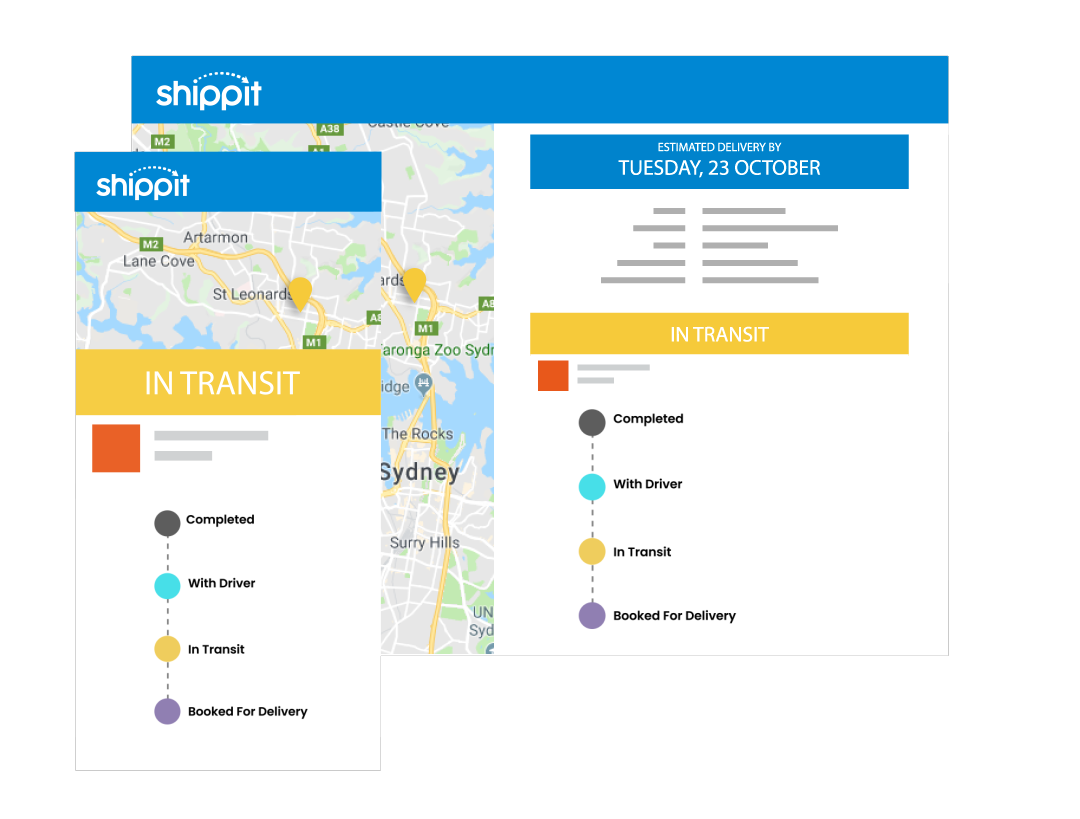Talk to any retailer, whether they’re online, omnichannel or traditional bricks and mortar, and they’ll all agree – the game is changing. To keep up with consumer demands for fast and free delivery, retailers of all shapes, sizes and footprints are feeling the heat. Competition is fierce, and it’s coming from everywhere. In an environment where the corner store is competing with a conglomerate, what can retailers do to keep up without dramatically scaling up? The answer is ship-from-store.
So what exactly is ship-from-store, and why is this such a game changer for modern retailers?
What is Ship From Store?
Like most trends, there’s always a cycle. In retail, we’ve witnessed the cycle from bricks-and-mortar retailers transitioning to pure-play online retailers back to omnichannel. Now with ship-from-store, we’re starting to see a shift back to bricks-and-mortar.
With online revenues continuing to soar, traditional retailers are always looking for innovative ways to win back market share without over capitalising or eroding profits. This is where a ship-from-store strategy comes into play. In essence, it’s quite simple; a ship-from-store fulfilment strategy is a process where traditional bricks-and-mortar retailers use stock that’s sitting on their shelves to pick, pack and dispatch online orders.
Instead of centralised distribution centres, a ship-from-store approach treats each store as a mini distribution centre, equipping them to send orders seamlessly.
One of the main advantages of rolling out a ship-to-store strategy is that it doesn’t matter if you’re a global fashion behemoth or a small suburban chain of pharmacies. In both cases, the strategy is simple and agile enough for all retail environments.
Take the global fashion chain, Zara, for example. With an online store, in addition to over 2,000 outlets in 48 countries, there’s a lot of inventory to manage. With many products marked as out of stock online, the global retailer is preparing to embark on the largest-scale ship-from-store project to help fulfil online orders. The potential upside is threefold. Customers who live closer to the store will most likely receive their order faster. Local stores can remain profitable and relevant amidst online competition, and their inventory will ultimately be better managed.
It’s not just global giants who can benefit from a multi-channel approach. Smaller retailers can use ship-from-store to expand into new markets without needing to set up warehouses or distribution channels. Take Australian business Superpharmacy, as an example. With five bricks-and-mortar stores across the nation, they’ve recently rolled out a ship-from-store strategy which helps them process online orders from within their stores without a costly distribution centre.
According to Forrester Research, ship-from-store is on the up with one of every three brick-and-click retailers set to roll out a ship-from-store program.
Customer Experience Upside
From keeping up with the competition perspective, it’s pretty clear how implementing a ship-from-store strategy can help multi-channel retailers keep active. But, there’s an additional upside in providing a much smoother customer experience which allows smaller retailers to compete with some of the biggest and best retail brands.
Think about it through the lens of traditional retail. When a customer walks into a store, they expect a certain level of service and quality, regardless of whether it’s a single shop or a multinational retailer. It’s the same scenario for online shopping; a potential customer expects a certain level of customer experience, especially when it comes to shipping and returns.
Ship-from-store gives retailers of all sizes the ability to roll out low-cost, highly-efficient distribution networks by turning their shelves into potential fulfilment centres which are closer to their customers.
The Profit Potential
A retailer’s greatest asset is its customers, and its biggest liability is their inventory. Anyone sitting on stock will feel the pain of managing a mammoth capital investment. In a fast-paced, rapidly evolving landscape, retailers are always looking for ways to innovate without eating into margins. As increased competition continues to put downward pressure on prices, retailers need to get smarter, sooner.
A ship-from-store fulfilment strategy can help keep profits intact by driving more sales and better managing inventory. For example, if a retailer is dispatching online orders through a distribution centre, and an item is out of stock – chances are, the sale is lost. However, if that item happens to be in stock on a shelf in-store, the answer is simple. The other obvious upside of ship-from-store is better inventory management, stock turnover and efficiency.
How Shippit Can Help
Shippit’s Pack & Ship and Tracking & Notifications’ features, dramatically streamline the entire fulfilment process, from pack to unpack. Fast fulfilment expedites packaging and carrier decisions, so you can pack and ship faster. Shippit’s smart technology chooses between multiple carriers and service providers, offering you the best way to pack, and the most efficient way to ship your order.
Managing multiple locations used to be a logistical nightmare. But, with cloud-based services and individual dashboards, each location can stay on top of the fulfilment process to ensure the shortest and most cost-effective route for every single order.
With customised shipping labels and notifications, no matter how big or small your operation, you always look professional and deliver better customer experience.
Ship-from-Store is a highly scalable way for growing businesses to test the waters into new markets, without the burden of setting up a distribution centre.
Want to see how Shippit can facilitate Ship-from-Store for your business? Get in touch, and our solutions experts will show you how.

